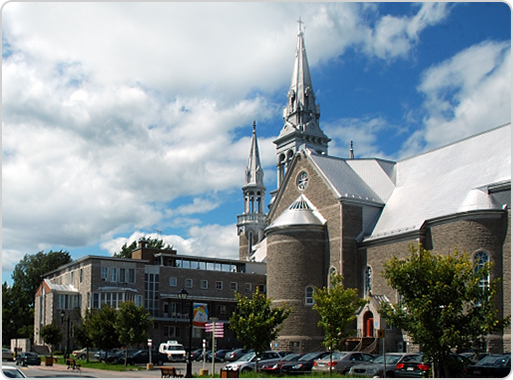N49° Eyewear - St. Jerome
49-15-143


canada
N49° Eyewear
ST. JEROME
ST. JEROME (2021 population 80,213) is a suburban city located about 45 kilometres (28 mi) northwest of Montreal on the Rivière du Nord. It is part of the North Shore sector of Greater Montreal. It is a gateway to the Laurentian Mountains and its resorts via the Autoroute des Laurentides.
The town is named after Saint Jerome (ca. 347 – September 30, 420), a church father best known as the translator of the Bible from Greek and Hebrew into Latin. His translation is known as the Vulgate.
The territory where the present city of Saint-Jérôme now stands was granted in 1752 by the marquis de la Jonquière, governor of New France, as the seignory of Augmentation des Mille-Iles (literally "enlargement" of the seignory of Mille-Iles). From the 1760s to the 1840s, the seignory was owned by the Dumont and Lefebvre de Bellefeuille families, living in the town of Saint-Eustache, 25 kilometers (16 mi) to the south. The Dumont and the Lefebvre conceded the farmland to colonists coming mostly from the region lying north of Montreal. The emerging town was then known under the name of Dumontville. The Catholic parish of Saint-Jérôme was constituted on November 15, 1834, and the village was constituted on July 1, 1845, by governor Metcalfe.
François-Xavier-Antoine Labelle, a Roman Catholic priest who was the great "colonizer" (promoter of settlement) of the North of Montreal, was in charge of the pastoral administration of Saint-Jérôme in 1868 until his death, in 1891. Eight years after his arrival, he had a railway built linking Saint-Jérôme and Montreal.
Antoine Labelle was the parish priest of Saint-Jérôme for 22 years, from 1868 until his death, at 57 years of age, on January 4, 1891. He was called "the king of North, the apostle of colonization".
The opening of roads and the arrival of a railway became essential with the development of the small communities in the Laurentians. These transportation routes for the movement of goods and people would ensure the establishment of trade and industry.
Labelle promoted the idea of a railway towards the North beginning in 1869. The railway reached Saint-Jérôme in 1876, partly because a railway was seen as a way to meet the needs for firewood and construction materials for urban centres like Montreal and Quebec.
The town is named after Saint Jerome (ca. 347 – September 30, 420), a church father best known as the translator of the Bible from Greek and Hebrew into Latin. His translation is known as the Vulgate.
The territory where the present city of Saint-Jérôme now stands was granted in 1752 by the marquis de la Jonquière, governor of New France, as the seignory of Augmentation des Mille-Iles (literally "enlargement" of the seignory of Mille-Iles). From the 1760s to the 1840s, the seignory was owned by the Dumont and Lefebvre de Bellefeuille families, living in the town of Saint-Eustache, 25 kilometers (16 mi) to the south. The Dumont and the Lefebvre conceded the farmland to colonists coming mostly from the region lying north of Montreal. The emerging town was then known under the name of Dumontville. The Catholic parish of Saint-Jérôme was constituted on November 15, 1834, and the village was constituted on July 1, 1845, by governor Metcalfe.
François-Xavier-Antoine Labelle, a Roman Catholic priest who was the great "colonizer" (promoter of settlement) of the North of Montreal, was in charge of the pastoral administration of Saint-Jérôme in 1868 until his death, in 1891. Eight years after his arrival, he had a railway built linking Saint-Jérôme and Montreal.
Antoine Labelle was the parish priest of Saint-Jérôme for 22 years, from 1868 until his death, at 57 years of age, on January 4, 1891. He was called "the king of North, the apostle of colonization".
The opening of roads and the arrival of a railway became essential with the development of the small communities in the Laurentians. These transportation routes for the movement of goods and people would ensure the establishment of trade and industry.
Labelle promoted the idea of a railway towards the North beginning in 1869. The railway reached Saint-Jérôme in 1876, partly because a railway was seen as a way to meet the needs for firewood and construction materials for urban centres like Montreal and Quebec.



